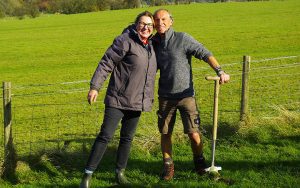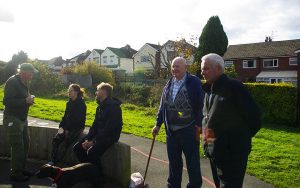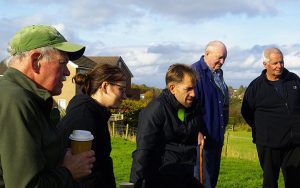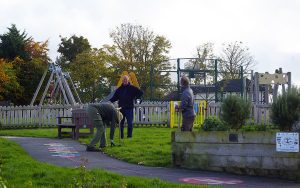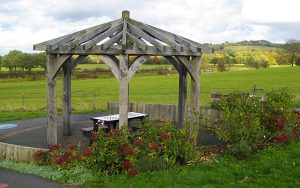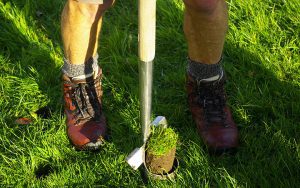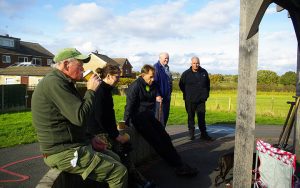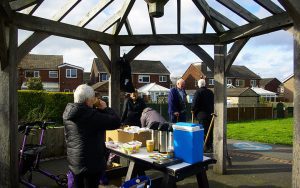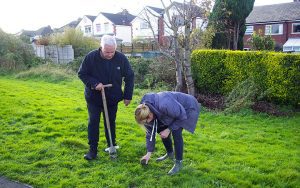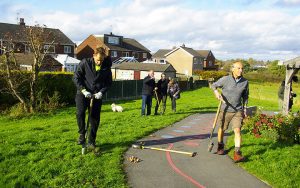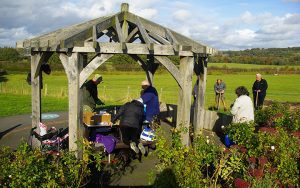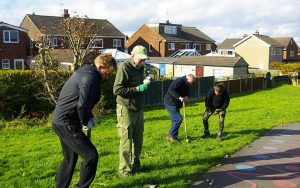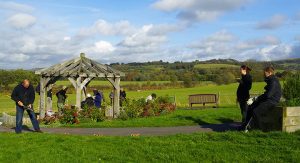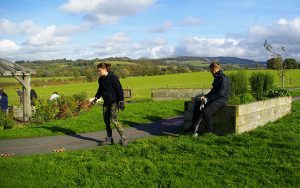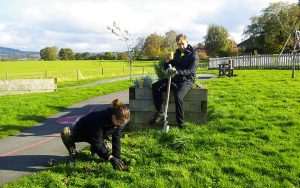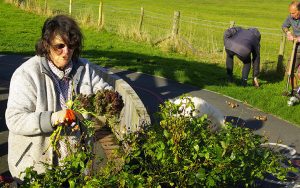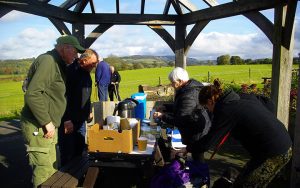Gardening Group
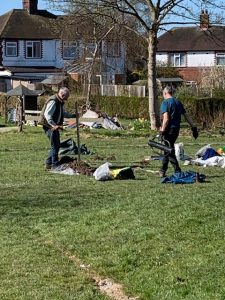
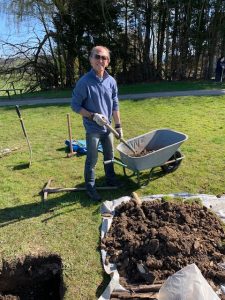
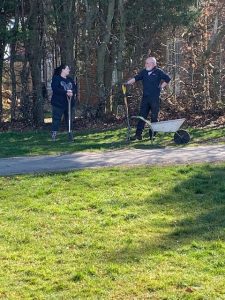
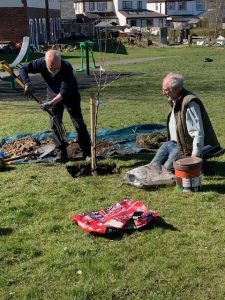
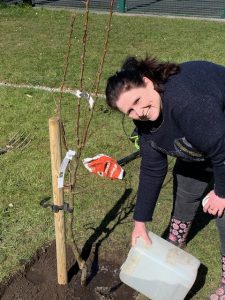
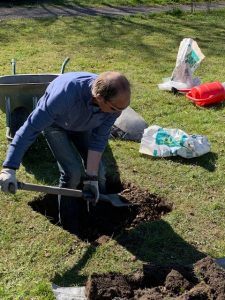
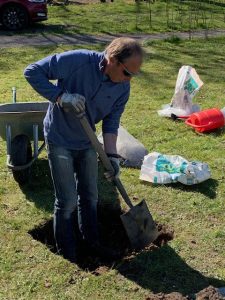
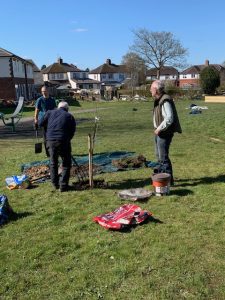
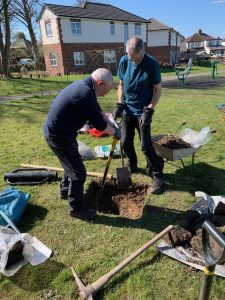
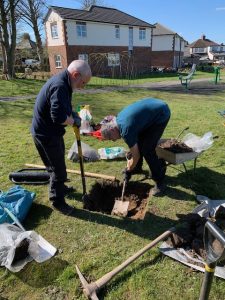
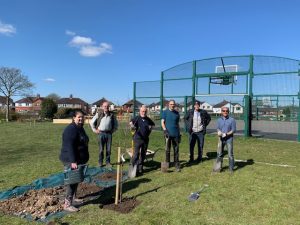
 Two of the raised beds were constructed by volunteers from Food4Macc, who also donated some of the fruit trees. All the raised beds are wheelchair accessible. All the materials and plants were funded by The National Lottery Community Fund.
Two of the raised beds were constructed by volunteers from Food4Macc, who also donated some of the fruit trees. All the raised beds are wheelchair accessible. All the materials and plants were funded by The National Lottery Community Fund.
Our gardening group volunteers look after all these items in the park, they thoroughly enjoy working together to provide these facilities for everyone of all ages and abilities that use the park, whilst doing so make new friends, learn new skills and enjoy the fresh air.
To support the volunteers for 2024 we are arranging for a much needed mains water supply with secure tap to be installed in the park and hope subject to a grant application to provide a small container with a living roof to store the tools and equipment needed to carry out the maintenance tasks.
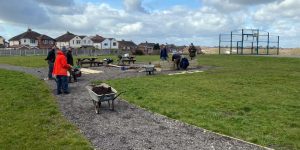
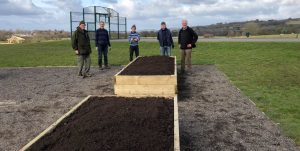
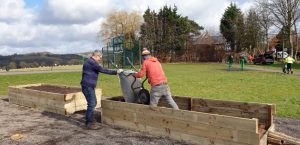
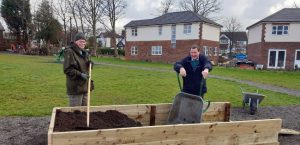
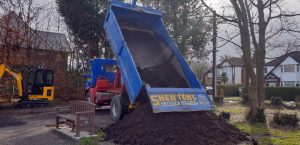
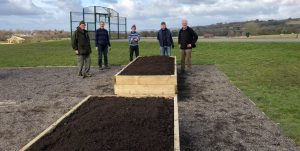
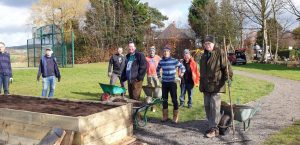
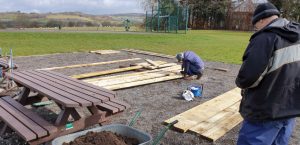
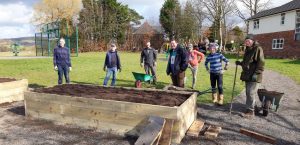
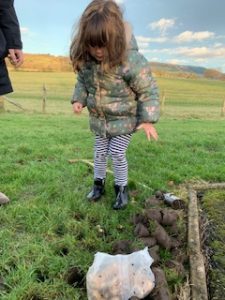
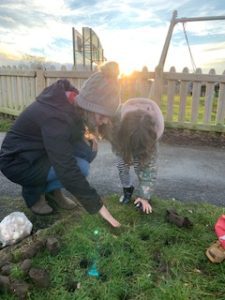
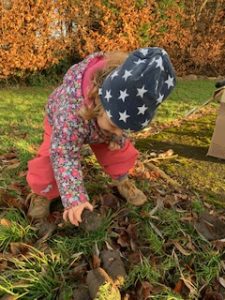
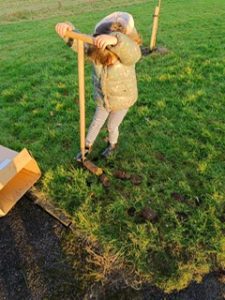
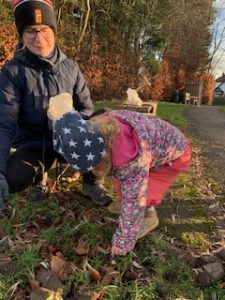
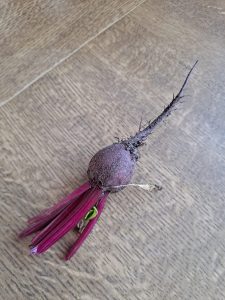
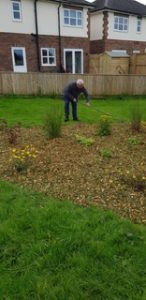
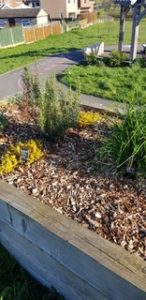
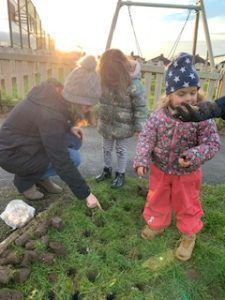
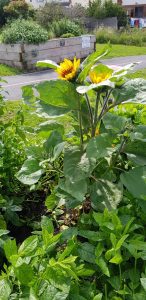
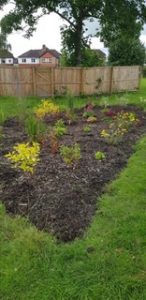
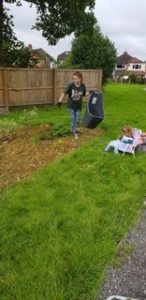
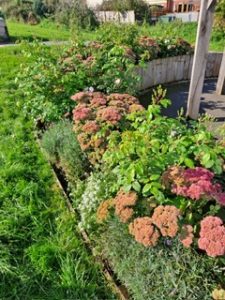
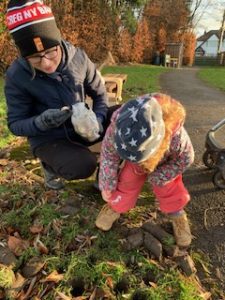
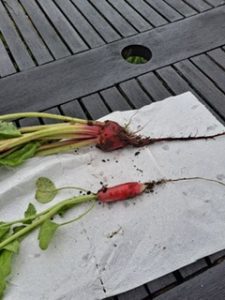
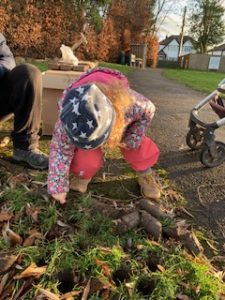
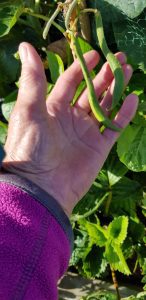
Bird, Bees, Bugs & Beavers
February 2024
Trustee Cyril, with volunteers Rose and Helen are working with Faye, a leader of Sutton St. James Beavers and creating two bug hotels, here we have the framework built by Cyril taking shape and yet to be filled with twigs, cones and suitable items to attract beneficial insects into this cosy environment.
The 6-8 year old beavers will be tasked with creating items to insert into the framework of the bug hotels.
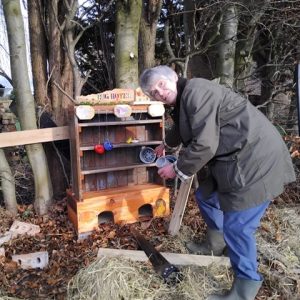
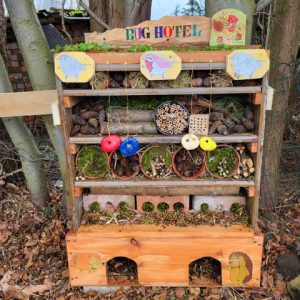
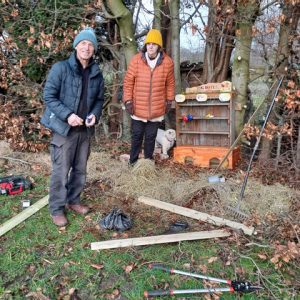
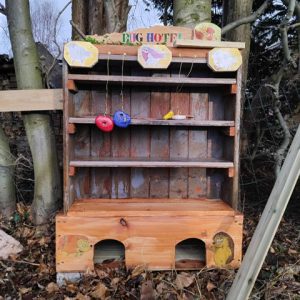
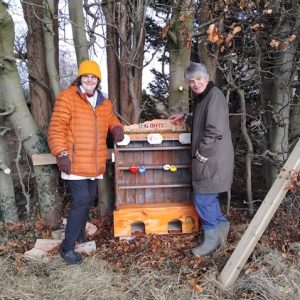
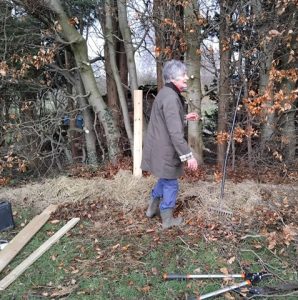
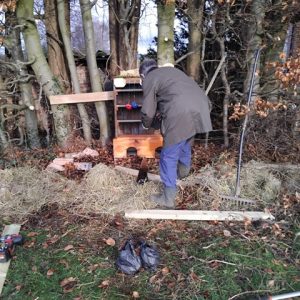

Nature has a way of taking and giving back life to earth, but sometimes, we can give it a helping hand by encouraging biodiversity. As most gardeners could tell you, our tiny creatures are crucial, and of course, most plants depend on pollinators.
So, we’re going to talk about ‘Bug Houses, Hotels, or any name you wish to give them. A Bug house is beneficial in bringing insects to an outdoor area and gives them a safe space, they also provide a handy use for our spare or leftover materials and stops them from going to waste, “one insects rubbish is another bugs treasure”. An insect, bug, or bee hotel is something most of us have seen before. But, still, many of us ask ourselves the question: how does an insect hotel actually work, and what is the gubbins inside that creates the life cycle, that effectively creates new life and preserves it? The present era of building more and more houses on brownfield land and greenfield land has caused many insect species problems in finding sufficient food sources and hiding places in our countryside. So the idea is to mimic their natural habitats and ensure that we include lots of twigs, small rocks and leaves, inside our bug houses, including, leaving plenty of small crevices where the bugs can feel safe from predators.
At the Lyme Green Community Park, we have made two ‘bug hotels’ out of recycled timber that was sitting doing nothing in my shed. In fact, I now realise that this timber, as with everything else in life, did have a purpose. It had already started new life, as woodlice, spiders, and microscopic bugs were already inhabiting this timber. Now they’ve been transported to a ‘New World’, to the ‘upper echelon’ of Lyme Green Community Park, from the ‘third world’ basement of my shed, it’s called ‘upcycling’🤣. I also included a basement ‘apartment’ for hedgehogs to use. I’m told by residents that hedgehogs are drawn to Langley, Sutton, and Lyme Green area like a magnet. The hedgehogs certainly do seem to like the beautiful gardens that will soon be seen to their best, now that ‘Spring has sprung into action’.
A ‘Bug Hotel’ has several uses. On the one hand, it serves as a shelter for various species of insects. However, on the other hand, reproduction is one of the main tasks inside their comfy accommodation. The various materials of this habitat help in replicating natural shelters, which are normally used by insects as breeding burrows. Thus, these beneficial bug hotels are primarily a nesting aid for insects, just like nesting boxes are used for birds. However, some bug hotel inhabitants also use them as hibernation apartments to get their forty winks.
The local Beaver group led by Faye Mukadam added their own personal touches when filling one of the bug hotels, as you can see in the photo. They spent a week foraging for materials and one evening creating the habitat! Faye said the Beavers thoroughly enjoyed taking part in this adventure and look forward to seeing their work each time they visit the Community Park. What a fabulous piece of work they did. Well done all.👏
Rose and Helen from the Lyme Green Community Park group also used their creative skills with their ‘interior design’ session with their bug hotel – see photo.
Cyril C Benson
Sensory area and fragrant daffodil planting.
We are looking at improving the sensory area in our park and have applied to the National Garden scheme for help with this project- Currently this area has two raised beds with herbs, a bird feeding area, a pagoda structure with a central picnic table and scented shrubs and plants around one side, currently fragrant daffodils are being planted around another side. We wish to relocate the picnic table, replacing it with a central planter, containing other fragrant shrubs and plants, adding two planters next to two of the uprights of the pagoda with scented climbers, and install a circular bench along one side.
The sensory area has already made a tremendous difference to the wellbeing of residents in our community, especially those suffering from memory loss or sight impairment by taking in the scent of the herbs by touch or smell and listening to the birds feeding. Some of our volunteers have suffered from loneliness and social isolation and by helping to look after this area have made new friends and improved their mental health and general wellbeing. The improvements we plan for this area, will extend the seasons of the scented plants shrubs and herbs, by introducing additional planting in the seating area.
By moving the existing picnic table and installing a curved bench it will allow residents who have limited mobility to sit and enjoy ambience, allowing any wheelchair users to sit next to them and engage in conversation.
The project will positively affect the wellbeing of hundreds of people, the footfall in the park already exceeds 100 people a day, with many more on warmer days, a good percentage of these use the sensory area for relaxation and reflection. This area of the park also has stunning views across a canal to open countryside.
The scented daffodils being planted were donated by The Three Villages Community Action Group CIC, some of our volunteers have just panted these 250 bulbs and enjoyed a coffee or tea and a get together to discuss other areas of the park that need maintenance. One other project is the repainting of our two friendship benches. Hopefully, these will be complete by Christmas.
